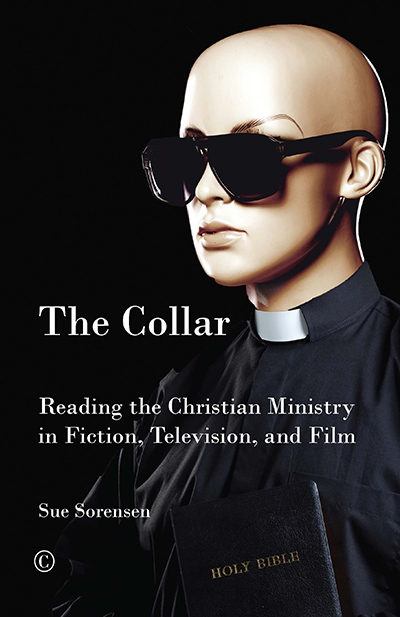Description
Combining thematic analysis and stimulating close readings, The Collar is a wideranging study of the many ways – heroic or comic, shrewd or dastardly – in which Christian clergy have been represented in literature, from George Herbert and Laurence Sterne via Anthony Trollope, G.K. Chesterton, T.S. Eliot and Graham Greene to Susan Howatch and Robertson Davies, and in film and television, such as Pale Rider, The Thorn Birds, The Vicar of Dibley and Father Ted. Since all Christians are expected to be involved in ministry of some type, the assumptions of secular culture about ministers affect more than just clergy. Ranging across several nations (particularly Britain, the U.S., and Canada), denominations, and centuries, The Collar encourages creative and faithful responses to the challenges of Christian leadership and develops awareness of the times when leadership expectations become too extreme. Using the framework of different media to make inquiries about pastoral passion, frustration, and fallibility, Sue Sorensen’s well-informed, sprightly and perceptive book will be helpful to anyone who enjoys evocative literature and film as well as to clergy and those interested in practical theology.
About the Author
Sue Sorensen is Associate Professor of English at Canadian Mennonite University and an active member of First Lutheran Church in Winnipeg. She is the author of a novel, A Large Harmonium, and the editor of West of Eden: Essays on Canadian Prairie Literature. She has written about contemporary British literature, detective fiction, film, popular music, children’s writing, the fiction of A.S. Byatt, and is also a published poet.
Contents
Foreword by William H. Willimon
Acknowledgments
Prelude: Why Literary Ministers?
Interlude: “The Collar” by George Herbert
1. Heroism and Suffering
Romero, The Mission, Becket, Murder in the Cathedral, The Power and the Glory, Gilead
Interlude: Diary of a Country Priest by Georges Bernanos
2. The Counselor/Confessor
George Eliot, E.M. Forster, A.S. Byatt
Interlude: Scenes of Clerical Life by George Eliot
3. Fools for Christ
Tristram Shandy, The Vicar of Wakefield, Bleak House, The Warden, Monsignor Quixote,
Heavens Above!, Rowan Atkinson’s vicars
Interlude: Barbara Pym and Jan Karon
4. The Collared Detective
Brother Cadfael mysteries, Father Brown stories, The Name of the Rose
Interlude: Cry, the Beloved Country by Alan Paton
5. Passion, for Better and for Worse
The Scarlet Letter, The Crucible, Racing Demon, Priest
Interlude: The Book Against God, a Novel by James Wood
6. Failure, for Worse and for Better
Jane Eyre, Middlemarch, Margaret Oliphant, Jane Austen, John Updike, Clint Eastwood
Interlude: Doubt, a Parable by John Patrick Shanley
7. Disaster
A Portrait of the Artist as a Young Man, Brand, The Spire, Light in August, Rain
Interlude: Pale Rider, directed by Clint Eastwood
8. Frustration: The Collar on Screen
The Thorn Birds, Footloose, 7th Heaven, Keeping the Faith, The Vicar of Dibley, Rev.
Interlude: The Bing Crosby and Richard Burton Movie Priests
9. Clergy Wives and Daughters: The Concealed Collar
A Clergyman’s Daughter, Bed Among the Lentils, The Rector’s Wife, Candida
Interlude: The Bell by Iris Murdoch
10. The Canadian Collar
The Stone Angel, Such is My Beloved, As For Me and My House, Good to a Fault,
Robertson Davies, Ralph Connor, Stephen Leacock, Warren Cariou
Interlude: Lights and Shadows of Clerical Life by William Cheetham
Postlude: Corpus permixtum
Bibliography
Index
Scripture Index
Endorsements and Reviews
A marvelous mix of scintillating literary criticism and probing theological reflection, Sue Sorensen has provided insight into why funny stories are funnier and tragic stories more tragic when a clergyman is the principal character. But she also explores the deeper question, ‘Have these artists, as outsiders looking in, captured that mysterious soul of the one who has that special call from Christ?’
Dale Ahlquist, President, American Chesterton Society
Like every professional, the minister inherits images he or she did not create and may or may not want to project. Some of these images persist well beyond the epochs that shaped them. A few are positive, even heroic; many are negative and demeaning. Not only for those directly involved in the vocation, but for all who try to understand what the church has been and is, it is good to sort out these sometimes ‘graven’ images. And what better way of doing that than by considering the great stories in which clergy have some degree of prominence.
Douglas John Hall, author of What Christianity Is Not
This is a book about fictional perceptions of Christian ministers within literature across several centuries and, more recently, within films and television. It is a delight to read….I thoroughly recommend this imaginiative book.
Robin Gill, in Theology, Vol 118.5
Sorenson writes well: clearly and crisply. Her analysis of the literature, and film, is for the most-part even-handed; and she is not blind to a work’s weaknesses even while appreciating the portrayal of ministry offered. Her observations, both theological and literary, provide material to ponder.
Derek Tovey, in Stimulus: The New Zealand Journal of Christian Thought and Practice, Vol 22, Issue 2
Sorensen has a sure touch as a critic, and she is right to value the BBC comedy drama Rev so highly for its realism and subtlety. All in all this is a treasure trove of interpretations even for those who do not share the author’s particular regional and religious perspective as a Canadian and committed Lutheran.
Mark Dorsett, in Theological Book Review, Vol 27, No 2






